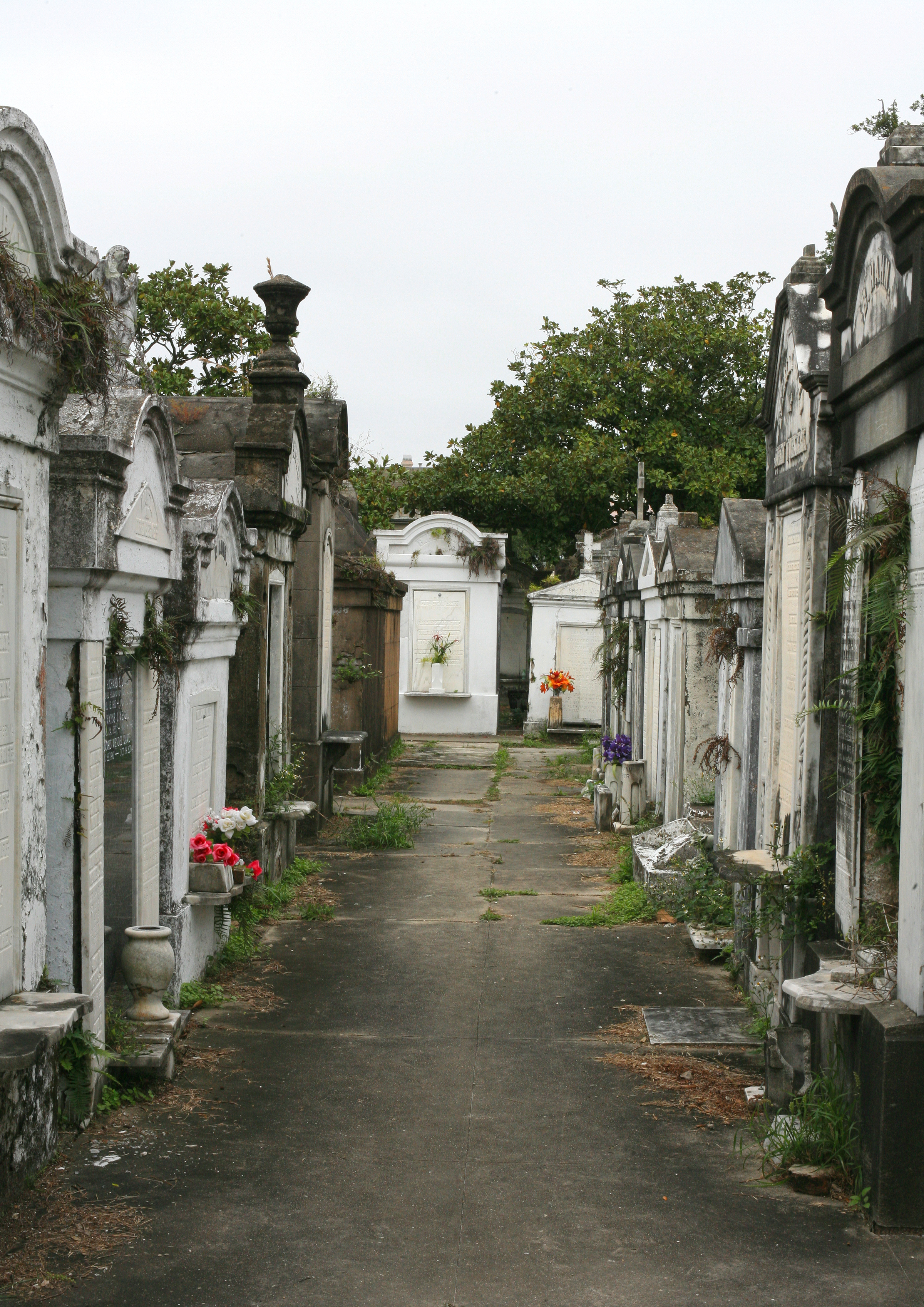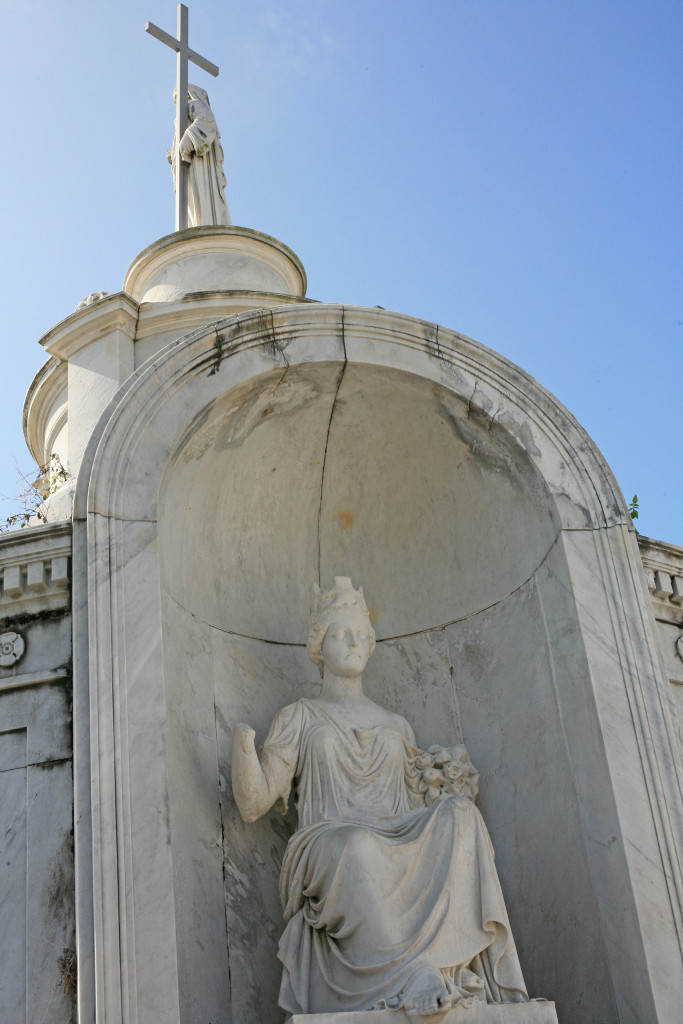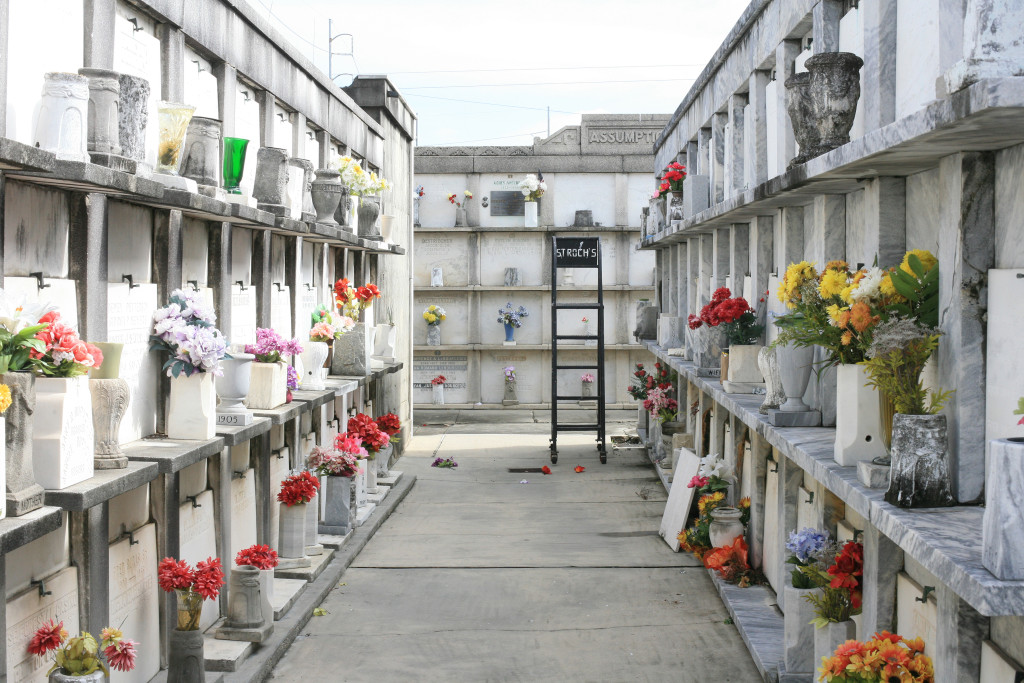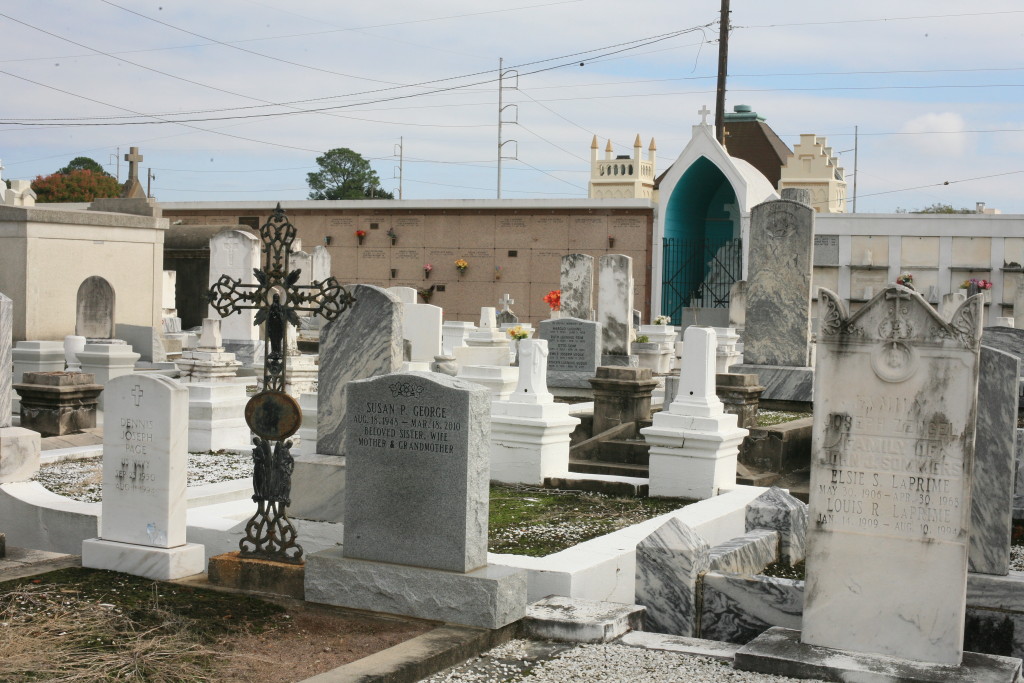New Orleans is one of the few cities in the United States where you can tell a stranger that your travel plans include visiting several cemeteries and no one will bat an eye. In fact, the city’s many cemeteries are some of its most popular tourist attractions. It’s both in spite of and because of this popularity that it can be hard to figure out which cemeteries you can visit and which you can’t.
Websites and social media are chock full of photos for just about every cemetery in New Orleans, but don’t take this as a sign that you can easily pop into Odd Fellows Rest to stage your own photo shoot. Because of crime and vandalism, some of the city’s cemeteries are actually off limits these days. A few are only accessible to tour groups. The guides for these groups actually have to register with the city, and guards monitor who comes in and out with each group. The tours usually require reservations, too, so spontaneity won’t do you much good.
With all these restrictions, planning my tour of Nola’s cemeteries required a lot more legwork than I expected. Save yourself the headache and start your planning by visiting Save Our Cemeteries, a non-profit dedicated to the preservation of New Orleans’ historic cemeteries. Of all the sites I visited, this one has the most up-to-date information on which cemeteries are currently open to the public, what their open hours are, and whether or not a tour guide is required to access them.
Lafayette Cemetery #1
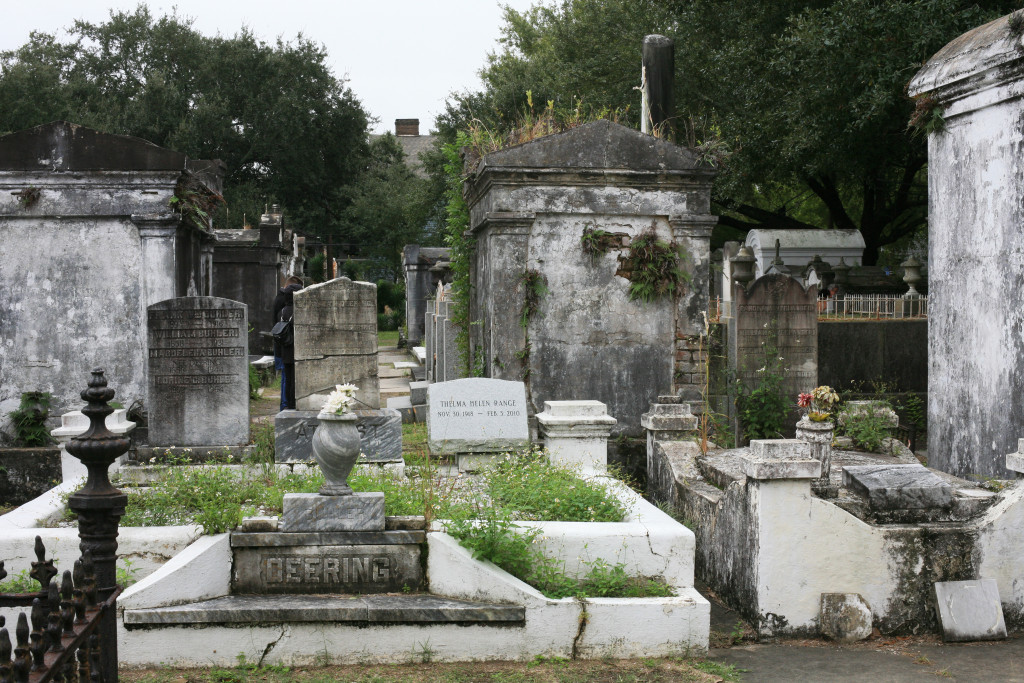
Located in the heart of the Garden District, Lafayette Cemetery #1 is one of the easiest to access. Of the three cemeteries that I visited, this one felt the most European. Surrounded on nearly all sides by trees, the grounds are quite green and somewhat overgrown with weeds. Ferns spring forth from cracks in damaged tombs down every aisle.
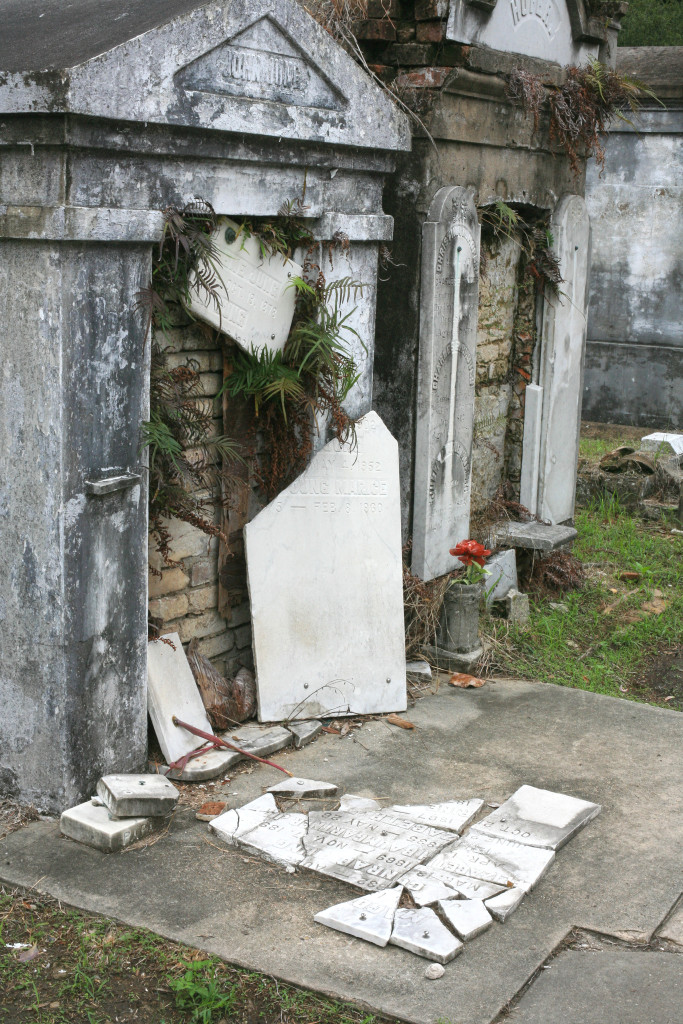
Save our Cemeteries works to preserve these aging tombs, and families are expected to care for their loved ones’ and ancestors’ tombs, but the crumbling facades in various stages of repair and disrepair do offer a glimpse into how the tombs were constructed, how the dead were preserved, and what goes into keeping these monuments intact.
St. Louis Cemetery #1
St. Louis #1 is probably the most famous of the city’s many cemeteries, likely due to its notable residents like Homer Plessy (and one very out-of-place and not-yet-used tomb belonging to the actor Nicolas Cage). Because of vandalism, this one of the cemeteries that you can only visit as part of a supervised tour with a registered tour guide. There are plenty of companies that offer tours, ranging from historic to campy. While the vampire and voodoo stories of New Orleans fascinate me, I prefer to hear the history behind the lore rather than indulge in sensationalism. The New Orleans Convention & Visitors Bureau recommended Historic New Orleans Tours, and as the name promised, our guide was knowledgeable on history and quick to dispel myths and misconceptions, particularly when it came to Voodoo.
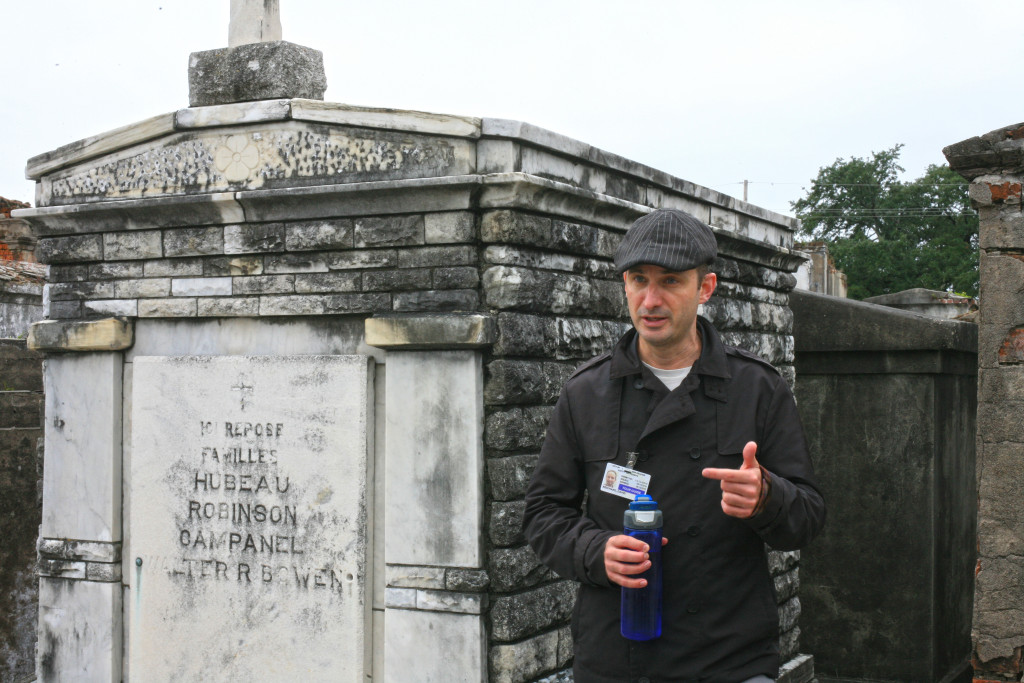
Marie Laveau‘s tomb is a big draw for tourists. I didn’t really know much about the legend of Marie Laveau, known as the “Voodoo Queen of New Orleans,” assuming that 99 percent of what I’d read on the internet would be more fiction than truth.
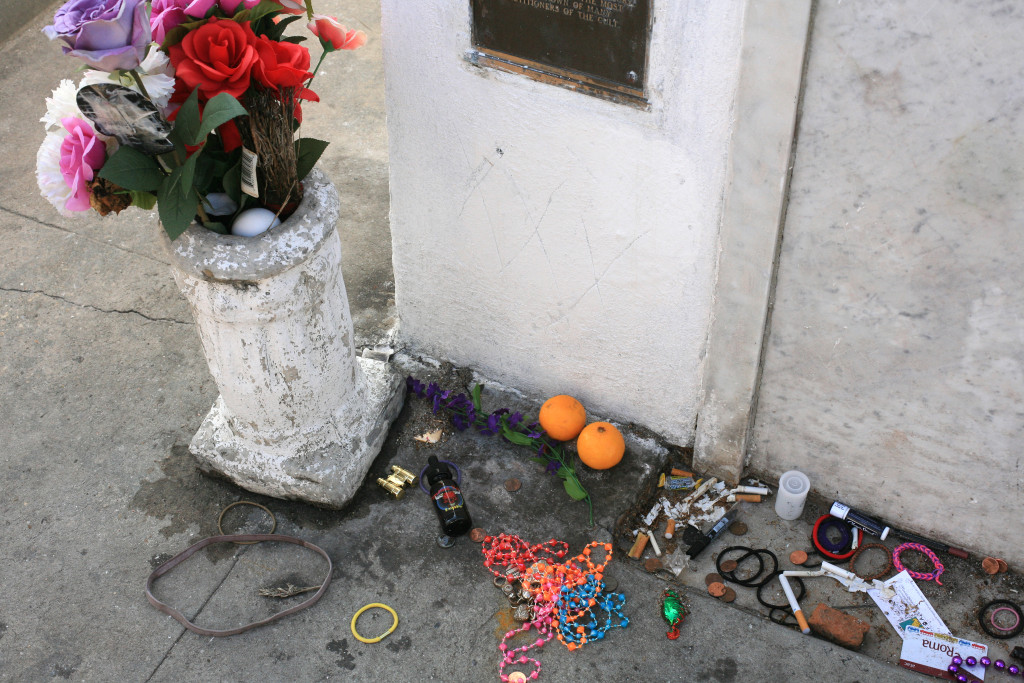
As you can see, lots of visitors like to leave offerings at her tomb (many think that it brings luck), but our guide insisted that this was actually a little disrespectful. He pointed out that a true Voodoo offering should reflect the person to whom it is offered. The hairbands could be seen as true offerings, since Marie Laveau worked for many years as a hair dresser, but the rest (like the Mardi Gras beads) were essentially like leaving trash in front of her tomb. Our guide went on to talk a lot about Voodoo and its connection to both Catholicism and the city’s history. If you’re at all interested in the truths behind this practice in New Orleans, rather than the superstitions and myths, this is a great tour to take.
St. Roch Cemetery
While Lafayette #1 teemed with green and Old World vibes, St. Louis #1 was something of a densely packed city within a city. St. Roch Cemetery was altogether different from both. Most of the tombs are much lower to the ground, and a good number of tombstones line the surrounding walls. Many guide books are quick to point out that visiting cemeteries in New Orleans isn’t always super safe. Some advise caution around cemeteries near “high crime” neighborhoods. More than a few sources point out the St. Louis #1 is near a housing project, so tourists should be cautious walking to and from it. Personally, I felt quite safe on the way to and from St. Louis #1, but we were walking with a tour guide who knew the streets well. My visit to St. Roch did give me the slightest unease though. While it’s not far from the Bywater, a gentrifying neighborhood, St. Roch cemetery is certainly on the outskirts of any areas that tourists frequent. Along the way, I passed several houses that still bore the “X-code” marks of Katrina. Once there, you do feel quite isolated. I’d advise not going alone and visiting during daylight hours.
One of the biggest draws at St. Roch is the chapel. In the 14th century, St. Roch ministered to victims of the plague. Because of the legend surrounding his healing powers, visitors to the chapel over the centuries have left a variety of oddities as offerings (everything from glass eyes to prosthetic limbs), hoping their offerings would lead St. Roch to heal their ailments.
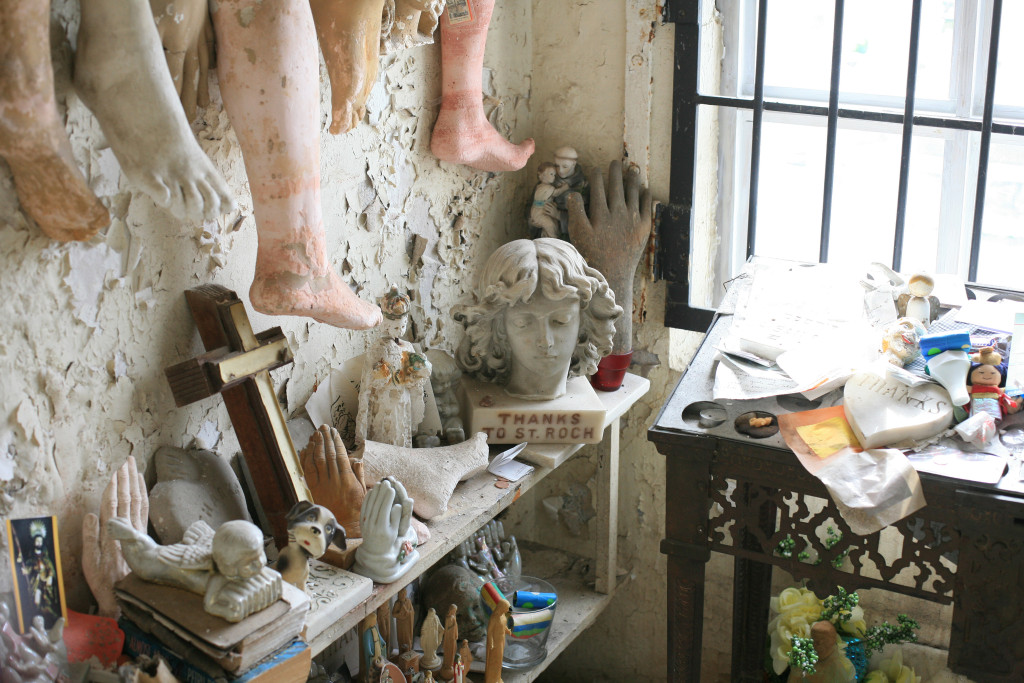
Having only 3 full days in New Orleans, I only visited 3 cemeteries, but each one was remarkable different. And there are many, many more left to see…something to bring me back for a future visit.
Do you have a favorite New Orleans cemetery, or tips for visiting? Share it in the comments below!
